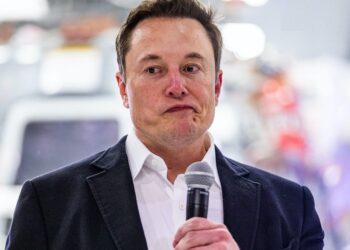Elon Musk’s satellite network, Starlink is on track to provide broadband internet everywhere in the world by August.
Starlink is technically a division within Space Exploration Technologies Corp (SpaceX), Elon Musk’s space exploration company. It is also the name of the company’s constellation of orbital satellites. Starlink aims to build an interconnected internet network with thousands of satellites to deliver high-speed internet to consumers anywhere on the planet, according to Bloomberg.
Backstory to Starlink
The development of the network began in 2015 and the first prototype satellites launched into orbit in 2018. SpaceX first rolled out the service with a beta program for select consumers for $99 a month and in the past year has sought regulatory approval to test the network inflight and expand the service to large moving vehicles, like ships and trucks.
Elon Musk, during a presentation at the Mobile World Congress conference yesterday, mentioned that SpaceX has launched more than 1,500 satellites so far and the network is operating in about a dozen countries. He stated that SpaceX’s total investment in the network is between $5 billion and $10 billion when discussing the tremendous cost implication of launching that many satellites.
He added that about $20 billion or $30 billion may be needed in the longer term to maintain Starlink’s competitive position and also estimating that the service, which has more than 69,000 active users currently, may reach half a million in the next 12 months. He stated, “Our goal is not to go bankrupt. Step No. 1 for Starlink is don’t go bankrupt. If we succeed in not going bankrupt then that’ll be great and we can move on from there.”
SpaceX aims to offer broadband to as much as 5% of the world’s population where conventional fibre and wireless networks cannot reach. Elon Musk stated, “We have two quite significant partnerships with major country [telecommunications companies], that I’d like to be able to announce now but obviously we defer to our partners to make any announcement. And we are in discussions with a number of other [telecommunications companies] to provide Starlink access”.
Starlink will provide so-called “data backhaul” spines for their networks. The satellite network currently moves about 30 terabits of data per second, and Musk said he’s targeting a network response time of less than 20 milliseconds.
What to expect from Starlink?
Elon Musk stated that the company is “losing money” on the satellite antennas (Dishes) that it provides to customers, as the hardware costs near $1,300 each but SpaceX charges users $499. To reduce the cost of the antennas, he mentioned that a next-generation antenna is in the works stating, “We’re working on a next-generation terminal that provides the same level of capability, roughly same level capability, but costs a lot less”.
Elon Musk also stated that the company is set to launch a new version of Starlink’s satellites next year that will have inter-satellite laser links to help them cover polar regions. He stated, “We’re getting close to launching satellite 1.5, which has laser inter-satellite links, and that’ll be used especially for continuous connectivity over the Arctic and Antarctic regions. Next year we’ll start launching version two of our satellite, which will be significantly more capable”.
He also touted that SpaceX is planning an orbital flight of its giant Starship rocket “in the next few months”.















.gif)






